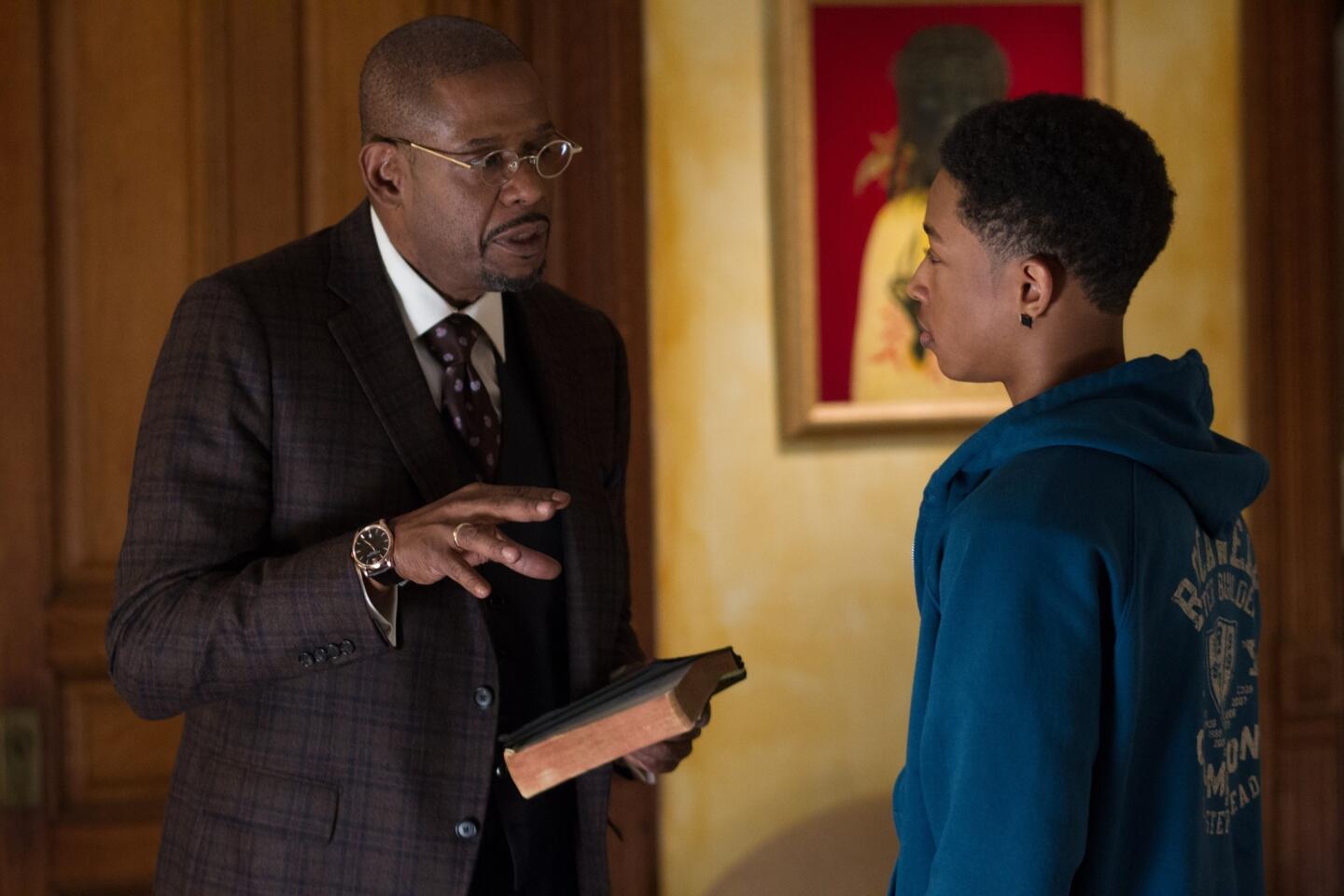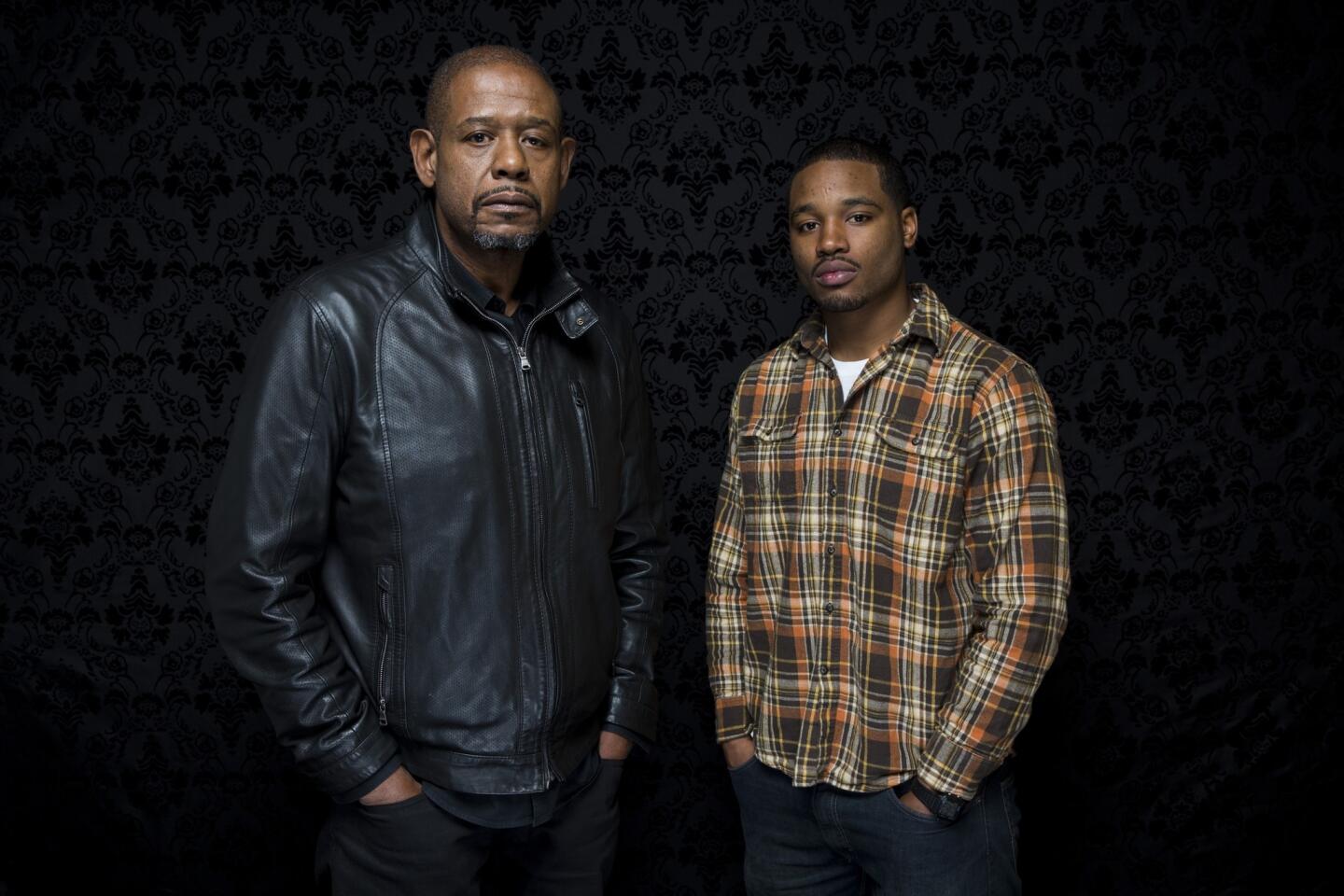Review: ‘Black Nativity’ is stage-bound but musically gifted
“Black Nativity” — the movie — seems like such a good idea.
Start with poet and playwright Langston Hughes’ powerful telling of the Christmas story — the spoken word, the gospel choir, the staging spare, the story timeless. Wrap a modern parable of hardship, heartbreak and hope around it. Then put it in the hands of a cast led by Forest Whitaker, Angela Bassett and Jennifer Hudson, who would know how to shake the rafters with the message and the music.
It’s a beautiful notion, constructed out of the best intentions, steeped in the spirit of the season. You can literally feel the reverence.
PHOTOS: Forest Whitaker - Career retrospective
But “Black Nativity” struggles mightily. You can feel that too.
Written and directed by Kasi Lemmons, an earnestness replaces the ease the actress-turned-filmmaker brought to 1997’s “Eve’s Bayou,” which remains her best work behind the camera. Though the Hughes homage comes deep in the film when the Rev. Cornell Cobbs (Whitaker) puts on his annual Christmas program at a Harlem church, the movie never breaks free of its theater roots. Or its fear of not measuring up.
Still, “Black Nativity” is a musical too, and on that front there are gifts aplenty. Hudson’s voice lifts the proceedings every time she sings. A soulful Mary J. Blige, as an earthbound angel, contributes in kind. Jacob Latimore, a rising young talent, makes his rendition of “Motherless Child” haunting. Indeed, Raphael Saadiq and Laura Karpman’s original score is one of the movie’s best features.
The story begins in a Baltimore row house with an eviction notice on the front door. Inside, struggling single mother Naima (Hudson) and her teenage son, bristling with bravado and named Langston (Latimore), move through the scene as if they are on a stage. Carefully and constricted.
The neighborhood setting — its graffiti, broken sidewalks and the litter lifted along by the wind — is designed for dramatic effect. That choice, and the production design of Kristi Zea, work to create an evocative visual narrative as the story moves from the economic depression of the cold Baltimore street to the well-burnished warmth of the Harlem brownstone where the Rev. Cobbs and his wife, Aretha (Bassett), live.
PHOTOS: Holiday survival guide - Tips from film and television
The central theme is a fractured family and the difficulties of a kid growing up with an absentee father and an uncertain future. Naima is the Cobbs’ long-estranged daughter, her teenage pregnancy driving the original split, her indignation keeping it going. Langston is the grandson they’ve never met. Until this Christmas.
Framed by familiar holiday leitmotifs of giving and sacrifice, the eviction pushes Naima to ask her parents for help, to take the boy in until she can get back on her feet. Langston was never going to like this plan, but between the bus ride from Baltimore, the confusion of Times Square where he’s deposited, the theft of his backpack, and no grandparents to meet him, he’s a powder keg of resentment ready to explode.
The film improves as it sets about healing the break. The interactions between the cultured Rev. Cobbs and his grandson, a streetwise stranger with attitude, are well drawn. I wish the film stayed with them longer. The idea of a family history and the impact of shared traditions come to life as the reverend talks to Langston about Martin Luther King Jr. and the civil-rights movement. Whitaker brings an understated eloquence to every line.
In a sense, it is the season that drives Langston to make a series of bad choices. He is desperate to get enough money to save the Baltimore house. At 15 or so, he has no idea how. What begins with stealing from his grandfather leads to a pawnshop run by a wise man, played by Vondie Curtis-Hall, and an encounter with a street hawker named Loot (Tyrese Gibson) that will change the teenager forever.
PHOTOS: Holiday movie sneaks 2013
It takes a while, but at long last all roads lead to the Harlem church where a bit of Hughes’ play comes to life. The Christmas story that Hughes chose, from the Gospel of St. Luke, always seems relevant. The taxation that forces the expectant couple to travel, the innkeepers’ refusal to give them a room, the stable, the star, the humble birth. For a moment, in this moment, the movie jells.
But many of the transitions between narrative and music are rough. The temptations of the street, all too real in the real world, feel forced. Confrontations become clichés. The substance of human motivation is missing. And thus the heart never beats as it should.
“Black Nativity” — the movie — seemed like such a good idea. But it struggles mightily. You can feel it.
----------------------------------
‘Black Nativity’
MPAA rating: PG for thematic material, language and a menacing situation
Running time: 1 hour, 35 minutes
Playing: In select theaters
More to Read
Only good movies
Get the Indie Focus newsletter, Mark Olsen's weekly guide to the world of cinema.
You may occasionally receive promotional content from the Los Angeles Times.











